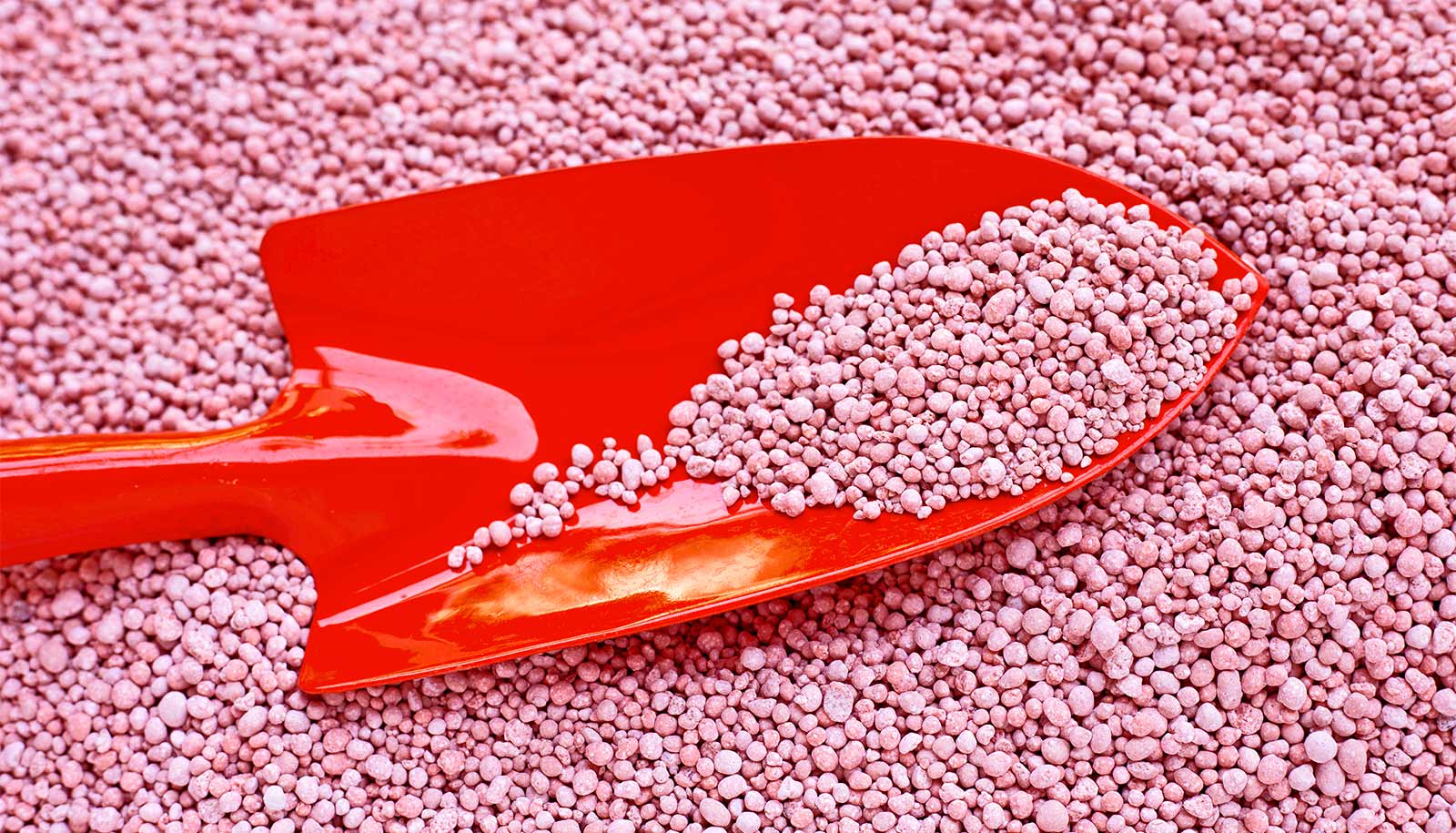New research is a step toward engineering plants to develop their own fertilizer.
Creating fertilizer is energy intensive, and the process produces greenhouse gases that are a major driver of climate change. And it’s inefficient. Fertilizing is a delivery system for nitrogen, which plants use to create chlorophyll for photosynthesis, but less than 40 percent of the nitrogen in commercial fertilizer makes it to the plant.
After a plant has been fertilized, there is another problem: runoff. Fertilizer washed away by rain winds up in streams, rivers, bays, and lakes, feeding algae that can grow out of control, blocking sunlight and killing plant and animal life below.
However, there is another abundant source of nitrogen all around us. Earth’s atmosphere is about 78 percent nitrogen, and the lab of Himadri Pakrasi, professor in the biology department at Washington University in St. Louis and director of the International Center for Energy, Environment and Sustainability (InCEES), has engineered a bacterium that can make use of that atmospheric gas—a process known as “fixing” nitrogen—in a significant step toward engineering plants that can do the same.
Unique bacteria
The researchers rooted their work in the fact that, although there are no plants that can fix nitrogen from the air, there is a subset of cyanobacteria (bacteria that photosynthesize like plants) that is able to do so. Cyanobacteria can do this even though oxygen, a byproduct of photosynthesis, interferes with the process of nitrogen fixation.
The bacteria researchers used in this research, Cyanothece, are able to fix nitrogen because of something it has in common with people.
“Cyanobacteria are the only bacteria that have a circadian rhythm,” Pakrasi says. Interestingly, Cyanothece photosynthesize during the day, converting sunlight to the chemical energy they use as fuel, and fix nitrogen at night, after removing most of the oxygen created during photosynthesis through respiration.
The research team wanted to take the genes from Cyanothece, responsible for this day-night mechanism, and put them into another type of cyanobacteria, Synechocystis, to coax this bug into fixing nitrogen from the air, too.
To find the right sequence of genes, the team looked for the telltale circadian rhythm. “We saw a contiguous set of 35 genes that were doing things only at night,” Pakrasi says, “and they were basically silent during the day.”
“If it’s a success, it will be a significant change in agriculture.”
The team manually removed the oxygen from Synechocystis and added the genes from Cyanothece. Researchers found Synechocystis was able to fix nitrogen at two percent of Cyanothece.
Things got really interesting, however, when postdoctoral researcher Deng Liu began to remove some of those genes; with just 24 of the Cyanothece genes, Synechocystis was able to fix nitrogen at a rate of more than 30 percent of Cyanothece.
Nitrogen fixation rates dropped markedly with the addition of a little oxygen (up to one percent), but rose again with the addition of a different group of genes from Cyanothece, although it did not reach rates as high as without the presence of oxygen.
“This means that the engineering plan is feasible,” Pakrasi says. “I must say, this achievement was beyond my expectation.”
Looking ahead
The next steps for the team are to dig deeper into the details of the process, perhaps narrow down even further the subset of genes necessary for nitrogen fixation, and collaborate with other plant scientists to apply the lessons learned from this study to the next level: nitrogen-fixing plants.
Crops that can make use of nitrogen from the air will be most effective for subsistence farmers—about 800 million people worldwide, according to the World Bank—raising yields on a scale that is beneficial to a family or a town and freeing up time that was once spent manually spreading fertilizer.
Could tree microbiomes cut fertilizer on crops?
“If it’s a success,” says Maitrayee Bhattacharyya-Pakrasi, a senior research associate in biology, “it will be a significant change in agriculture.”
The research appears in the journal mBio. The National Science Foundation funded the research.



